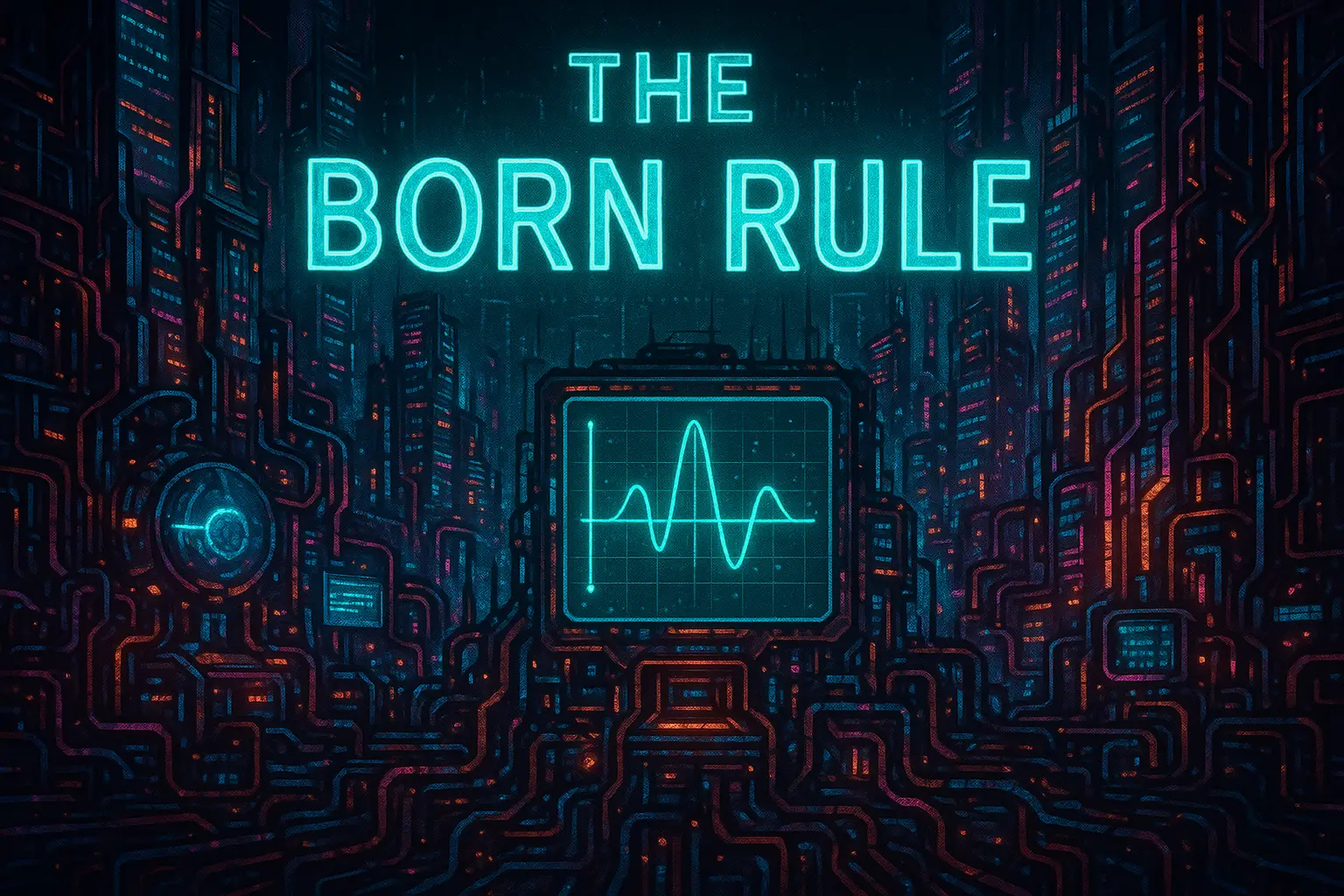Table of Contents
- Introduction
- Historical Background
- What Is the Born Rule?
- Mathematical Statement
- Connection to Probability Amplitudes
- Normalization and Completeness
- Interpretation of the Wavefunction
- Experimental Validation
- Role in the Measurement Process
- Born Rule in Discrete and Continuous Systems
- Born Rule in Position and Momentum Representations
- Born Rule and Quantum Interference
- Challenges and Interpretational Issues
- Derivation Attempts and Axiomatic Foundations
- Born Rule in Quantum Information
- Conclusion
1. Introduction
The Born rule is a fundamental postulate of quantum mechanics. It connects the mathematical formalism of wavefunctions and quantum states to experimental observations by assigning probabilities to measurement outcomes. Without it, quantum theory would be a purely mathematical construct with no predictive power.
2. Historical Background
Proposed by Max Born in 1926, the rule introduced a radical departure from classical determinism. Born suggested that the square modulus of a wavefunction gives the probability density of finding a particle, thus making quantum mechanics an inherently probabilistic theory.
3. What Is the Born Rule?
The Born rule states:
The probability of finding a quantum system in a state \( |a\rangle \) upon measuring an observable \( \hat{A} \), when the system is in state \( |\psi\rangle \), is given by:
\[
P(a) = |\langle a | \psi \rangle|^2
\]
Where:
- \( \langle a | \psi \rangle \) is the probability amplitude
- \( |\langle a | \psi \rangle|^2 \) is the actual probability
4. Mathematical Statement
Let \( \hat{A} \) be an observable with eigenstates \( |a_i\rangle \), then for a normalized state \( |\psi\rangle \):
\[
\sum_i |\langle a_i | \psi \rangle|^2 = 1
\]
This implies the completeness of the eigenbasis and normalization of total probability.
5. Connection to Probability Amplitudes
Amplitudes:
\[
\langle a_i | \psi \rangle
\]
- Complex numbers that encode phase and magnitude
- Only the square modulus gives measurable probabilities
- Allows interference and superposition phenomena
6. Normalization and Completeness
Wavefunction normalization:
\[
\int_{-\infty}^\infty |\psi(x)|^2 dx = 1
\]
Completeness relation:
\[
\sum_i |a_i\rangle \langle a_i| = \hat{I}
\]
Ensures the Born rule accounts for all possible outcomes.
7. Interpretation of the Wavefunction
In position space:
\[
\psi(x) = \langle x | \psi \rangle
\]
\[
|\psi(x)|^2 dx = \text{Probability of finding the particle in } [x, x+dx]
\]
Similarly, in momentum space:
\[
|\tilde{\psi}(p)|^2 dp = \text{Probability of finding momentum in } [p, p+dp]
\]
8. Experimental Validation
- Double-slit experiment: interference patterns match \( |\psi|^2 \)
- Stern–Gerlach experiment: spin probabilities match projection probabilities
- Bell test experiments: statistical correlations follow quantum predictions via Born rule
- Quantum tomography confirms state predictions
9. Role in the Measurement Process
The Born rule is essential to:
- Predicting measurement outcomes
- Understanding wavefunction collapse
- Linking the abstract Hilbert space to lab experiments
- Calculating probabilities in multi-qubit and entangled systems
10. Born Rule in Discrete and Continuous Systems
Discrete (finite-dimensional):
\[
P(a_i) = |\langle a_i | \psi \rangle|^2
\]
Continuous (infinite-dimensional):
\[
P(x) = |\psi(x)|^2
\]
\[
\int P(x)\,dx = 1
\]
Requires integrability and square-normalizability of \( \psi(x) \).
11. Born Rule in Position and Momentum Representations
- Position space:
\[
P(x) = |\langle x | \psi \rangle|^2 = |\psi(x)|^2
\] - Momentum space:
\[
P(p) = |\langle p | \psi \rangle|^2 = |\tilde{\psi}(p)|^2
\]
Fourier transform connects position and momentum amplitudes.
12. Born Rule and Quantum Interference
In double-slit experiments:
\[
P = |\psi_1 + \psi_2|^2 = |\psi_1|^2 + |\psi_2|^2 + 2\text{Re}(\psi_1^* \psi_2)
\]
Interference term arises from complex amplitudes, not directly observable probabilities.
13. Challenges and Interpretational Issues
- Wavefunction collapse: not explained by unitary evolution
- Measurement problem: when does collapse occur?
- Many-worlds interpretation: Born rule is postulated, not emergent
- Objective collapse theories attempt to modify the Born rule
Still an open question: Is the Born rule fundamental or emergent?
14. Derivation Attempts and Axiomatic Foundations
Several attempts to derive the Born rule include:
- Gleason’s theorem (for Hilbert spaces of dimension ≥ 3)
- Deutsch–Wallace decision-theoretic derivations (many-worlds)
- Bayesian and frequency interpretations
However, most interpretations assume the Born rule.
15. Born Rule in Quantum Information
- Core to quantum tomography, error correction, and quantum algorithms
- Used in simulating quantum circuits
- Determines fidelity and entropy in quantum states
- Measurement probabilities in qubits rely on the Born rule
16. Conclusion
The Born rule bridges the abstract world of wavefunctions with the real world of laboratory observations. It defines the probability structure of quantum theory and is vital for predicting outcomes, designing experiments, and understanding the probabilistic nature of quantum phenomena. While foundational, its interpretation and possible derivation remain some of the most profound questions in physics.


